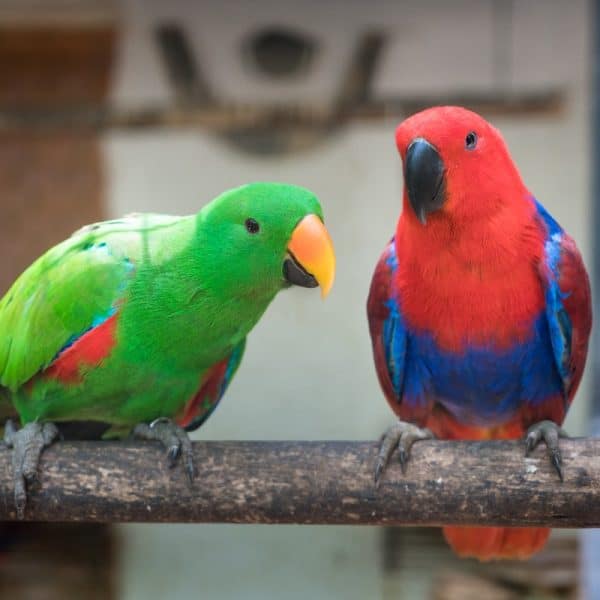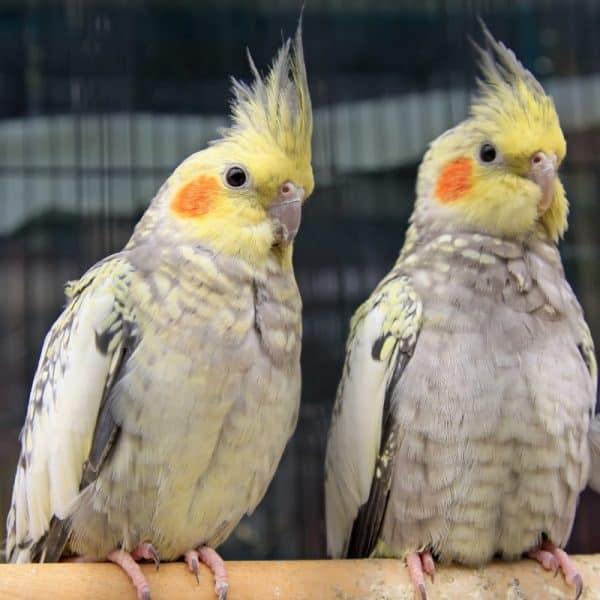Last Updated on by Mitch Rezman
Every once in a while we get a request for bird leg bands. Because of the variety and broad selection necessary to satisfy every birders needs it’s a category that we choose not to cover at this time.
Leg bands come in a variety of sizes and are available in plastic, aluminum and stainless steel. Leg bands are used for different purposes. Many states and Uncle Sam require permits to move certain species of birds into a given state as well as owning some exotic birds. If you do need to obtain a permit you may need a bird’s band number because it will indicate that that bird was imported legally or bred domestically.
Birds that are imported from other countries contain certain codes on their bands. There are two types of quarantine stations, privately owned and USDA owned and operated both having a unique set of codes. Bands are also widely used for poultry. The USDA mandates all imported birds must be banded. If you have an older bird with mature feet an open band is the only option to have one put on.
Closed bands are usually found on domestic birds. The most important reason for using a closed band is to provide a permanent means of identification which allows breeders to keep records of hatch dates, medical records, ownership and so forth and at the same time it makes possible the quick identification of a lost or stolen bird.
One of the downsides to closed leg bands is they can get caught on wires and bird toys and can lead to serious injury especially if your bird gets trapped and no one is around to rescue it. They are circular have no seam. In most cases, if a bird is wearing a closed band it’s because only young birds about 2 to 3 weeks old can be close banded by sliding the band over the chick’s tiny foot so there’s a very small window before the foot grows too big for a band to be slipped over the foot and leg.
Open bands are simply small pieces of metal or plastic forming a circle. The ends of the metal bands don’t meet and are separated by space to enable them to slip over a mature bird’s leg. Once they’re slipped over the leg the band is pinched together. An open band is usually found on wild-caught or imported birds. Many people who race birds and get new birds to want some identification will use open bands. They can be color coordinated to help a breeder identify a particular bird or it’s sex.
Depending upon the source of the brand it will determine if you can ultimately find the source of the bird. Organizations like the American Federation of Aviculture have recordkeeping services that may help in determining the origin of a lost bird.
The Bird Banding Laboratory, located at the US Geological Survey Patuxent Research Center controls and issues all federal bands and banding permits under the Migratory Bird Treaty act. You’ll usually find a metal band on terrestrial birds. Plastic bands and collars will be found on waterfowl and shorebirds. If you find a wild bird that is banded you can report it on this site.
It’s important to think about removing a leg band. You may have occasion to remove the leg band but you have to be very careful because unbanded birds may not be able to be transported across the United States in the future. An unbanded bird also may be more difficult to sell in the future or it could be harder to move out of state or to another country with your pet.
If you are a member of the American Federation of Aviculture you can purchase stock closed aluminum bands one or two at a time from their website.
For locating birds with bands: 800-327-2263; or for identification of birds found in CA and NV: Tel. 916.414.6736 (Migratory Bird Permit Department – US Fish and Wildlife Service.)
Author Profile
Latest entries
 The Traveling BirdJune 26, 2025Can You Name 5 Parrot Species That Are Living Wild in the USA?
The Traveling BirdJune 26, 2025Can You Name 5 Parrot Species That Are Living Wild in the USA? Bird BehaviorJune 26, 2025How is it Parrots Are Problem Solvers Social Animals and Even Use Tools?
Bird BehaviorJune 26, 2025How is it Parrots Are Problem Solvers Social Animals and Even Use Tools? Bird & Parrot AnatomyJune 25, 2025How a Tiny Chemical Modification Makes Parrots Nature’s Living Paintings
Bird & Parrot AnatomyJune 25, 2025How a Tiny Chemical Modification Makes Parrots Nature’s Living Paintings PigeonsJune 20, 2025How Do Parrots Thrive in Cities Outside Their Native Habitats?
PigeonsJune 20, 2025How Do Parrots Thrive in Cities Outside Their Native Habitats?




